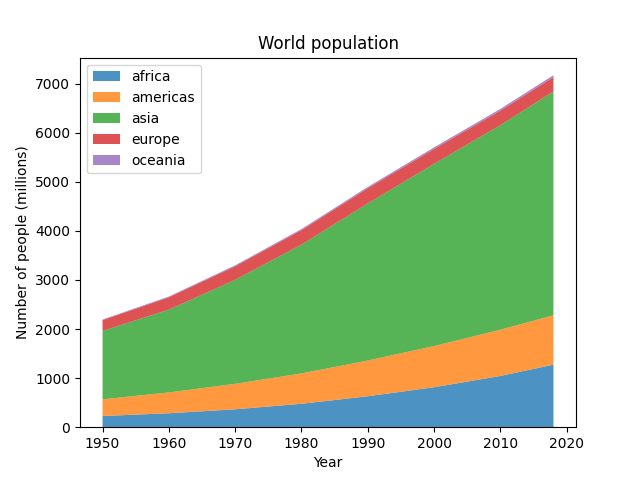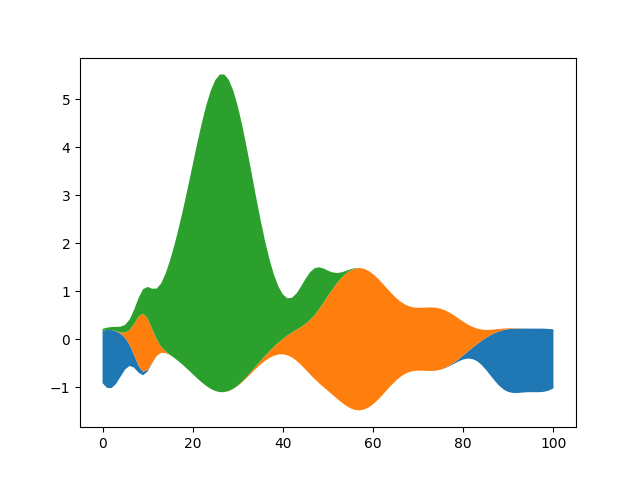Notiz
Klicken Sie hier , um den vollständigen Beispielcode herunterzuladen
Stapelplots und Streamgraphs #
Stapelplots #
Stapeldiagramme zeichnen mehrere Datensätze als vertikal gestapelte Bereiche. Dies ist sinnvoll, wenn die einzelnen Datenwerte und zusätzlich deren kumulierter Wert von Interesse sind.
import numpy as np
import matplotlib.pyplot as plt
# data from United Nations World Population Prospects (Revision 2019)
# https://population.un.org/wpp/, license: CC BY 3.0 IGO
year = [1950, 1960, 1970, 1980, 1990, 2000, 2010, 2018]
population_by_continent = {
'africa': [228, 284, 365, 477, 631, 814, 1044, 1275],
'americas': [340, 425, 519, 619, 727, 840, 943, 1006],
'asia': [1394, 1686, 2120, 2625, 3202, 3714, 4169, 4560],
'europe': [220, 253, 276, 295, 310, 303, 294, 293],
'oceania': [12, 15, 19, 22, 26, 31, 36, 39],
}
fig, ax = plt.subplots()
ax.stackplot(year, population_by_continent.values(),
labels=population_by_continent.keys(), alpha=0.8)
ax.legend(loc='upper left')
ax.set_title('World population')
ax.set_xlabel('Year')
ax.set_ylabel('Number of people (millions)')
plt.show()

Streamgraphen #
Mit dem Basislinienparameter können Sie ein gewöhnliches gestapeltes Flächendiagramm mit der Basislinie 0 in ein Stromdiagramm umwandeln.
# Fixing random state for reproducibility
np.random.seed(19680801)
def gaussian_mixture(x, n=5):
"""Return a random mixture of *n* Gaussians, evaluated at positions *x*."""
def add_random_gaussian(a):
amplitude = 1 / (.1 + np.random.random())
dx = x[-1] - x[0]
x0 = (2 * np.random.random() - .5) * dx
z = 10 / (.1 + np.random.random()) / dx
a += amplitude * np.exp(-(z * (x - x0))**2)
a = np.zeros_like(x)
for j in range(n):
add_random_gaussian(a)
return a
x = np.linspace(0, 100, 101)
ys = [gaussian_mixture(x) for _ in range(3)]
fig, ax = plt.subplots()
ax.stackplot(x, ys, baseline='wiggle')
plt.show()
